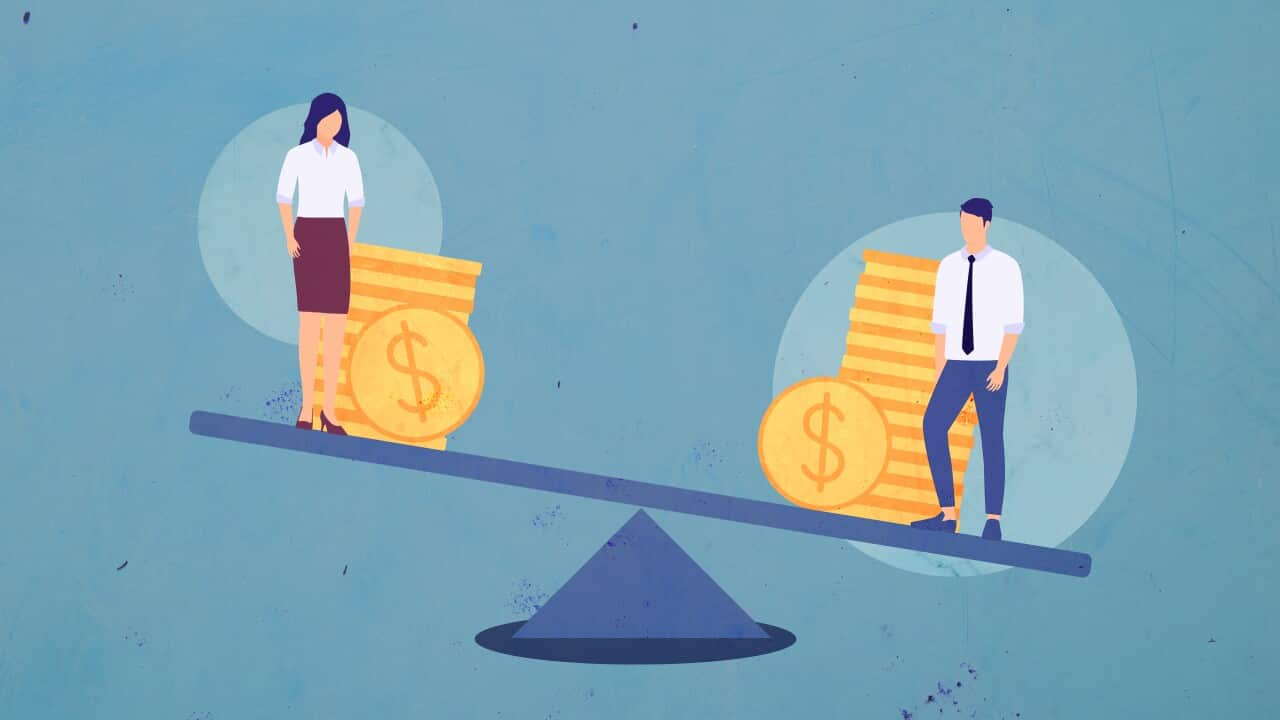School teaches us a lot of skills we'll use throughout our lives.
But experts say there's one thing many Australian girls finish their education without having learnt — and it's having a "significant impact" on their economic futures.
Having a high level of financial literacy is a "critical life skill", Katrina Samios, CEO of non-profit organisation the Financial Basics Foundation (FBF), says.
"I think it's crazy that given that every single human has a relationship with money, there's no standard level of understanding that we require every person to have around that."
Several recent studies have found that not only are financial literacy levels declining in Australia, but women and girls are disproportionately affected.
Financial literacy means knowing how to handle money wisely and includes having skills in budgeting, saving and investing.
The OECD's Programme for International Student Assessment (PISA) — which measures 15-year-olds' ability to use their maths, science, and reading skills and knowledge to meet real-life challenges — showed a drop in Australian children's financial literacy between 2012 and 2018.
The latest Household, Income and Labour Dynamics in Australia (HILDA) survey also indicated Australians’ average financial literacy scores were going backwards.

Survey respondents were asked five questions to measure their financial literacy, receiving a score of one for each correct answer. Source: SBS News
The five questions asked in the HILDA survey relate to an understanding of interest rates, an understanding of inflation, an understanding of diversification of investments and an understanding of risk.

The average Australian male's financial literacy test score in 2020 was 0.5 higher than the average female's. Source: SBS News
Almost three times as many men as women had high financial literacy.

There is a clear gender gap when it comes to Australians' levels of financial literacy. Source: SBS News
Why is there a financial literacy gender gap?
Laura de Zwaan, a senior lecturer at Queensland University of Technology and expert in personal finance and superannuation, said it was difficult to know what was driving the overall decline in Australians' financial literacy levels.
But there were two schools of thought as to why multiple studies indicated a persistent gender gap, she said.
The first is that there are lower levels of financial literacy among women and girls, which could be due to the differences in how males and females are raised.
"There's studies out there about boys getting more pocket money or boys getting paid for domestic chores when perhaps girls don't, and certainly conversations about financial products, things like that, we know that these are had more with boys when they're being brought up," she said.
De Zwaan said research she'd conducted suggested that the way financial literacy is measured could also be contributing to the gender gap.
She said when asked questions designed to test financial literacy, females were more likely to say they didn't know the answer.
"It could be risk aversion or maybe they're just being more careful, but they're less likely to just have a go, whereas boys are more likely to select an answer, even if it's a wrong answer," she said.
"If we gave females more of an opportunity to express themselves or their knowledge in different ways, maybe we wouldn't find such a big gap."
What are the implications?
De Zwaan said people with low financial literacy typically have poorer economic outcomes.
"We know that they'll be worse off in retirement — they'll have less saved, they'll have less stock market participation, or generally less investments," she said.
De Zwaan said they were also more likely to have problems with debt, have no emergency savings, and be underinsured.
"That means that if they do have some sort of financial shock, they're not going to be able to handle that very well," she said.
Samois said low levels of financial literacy could also increase a person's , economic abuse, and exploitation.
"The minute that you have some sense of confidence about managing your own money, you are, to a degree, not as susceptible to that financial control and coercion, or risk of being taken advantage of," she said.
What needs to change?
While consumer and financial literacy is included in the Australian Curriculum up to Year 10, Samios said the delivery of it was "very ad hoc".
"Some schools, they'll have a really strong financial literacy program and others might have none," she said.
Samios said most financial literacy education is administered in maths classes — where boys typically outperform girls — and in business and economics electives, which tend to have fewer female students than male.
"The context and the way that girls want to learn about these things and communicate their understanding is different to boys," she said.
"When this element sits in the maths curriculum and young people — particularly young girls — go into it thinking there's a focus on formulas and calculations, they immediately disengage and lose interest, even though that's not what financial literacy is," she said.
Samios said the FBF wanted a standardised personal finance course to be added to the curriculum, which would ideally be delivered over five or six weekly lessons in Years 7, 8, 9, and 10.
"If we're not teaching this stuff in a consistent way and we are keeping it in maths, and girls keep saying: 'I'm not good at maths', well, we're not changing it," she said.
"So it's got to be standalone, it's got to be a course that all young people do so that we don't keep saying: 'I never got taught that at school … I never got taught the difference between a savings account and a transaction account, and that one earns interest and helps me build wealth and one is about my money coming in and out.'"
"Even that concept is foreign to lots of kids who come out of high school."
Samios said the FBF was launching a free, first-of-its-kind online program in July for teachers, which could be used as the basis for the course.
"It's five courses ready to go for teachers to implement with whatever year level, in whatever lessons they think is appropriate," she said.
SBS News asked federal Education Minister Jason Clare why financial literacy wasn't taught in a standardised or consistent way in Australian schools, and if the government was addressing the declining rates of financial literacy and the widening gender gap.
He was also asked if the government would consider adding a standalone personal finance course to the curriculum.
Clare said while Australia's education system was "good" it could be "a lot better and a lot fairer".
"That's why we have put $16 billion in additional funding for public schools on the table — this would be the biggest increase in Commonwealth funding to public schools that has ever been delivered," he told SBS News in a statement.
"We have reached agreements with WA and the NT. I want to do the same with the other states and territories."
Clare said the funding would be tried to reforms to help students "catch up, keep up and finish school".
"We want students from all backgrounds to have the same opportunities to excel at school, including in financial literacy subjects," he said.

Federal Education Minister Jason Clare said while Australia's education system was "good" it could be "a lot better and a lot fairer". Source: AAP / Lukas Coch
Tips to increase your child's financial literacy
Samios said if parents wanted to build financial capability in their children, it was vital to start having "regular, open" conversations about money as early as possible.
"[By] taking away that sense that talking about money is taboo, you build the confidence in your kids," she said.
Samios said engaging children in conversations about everything from the weekly shop to budgeting for a holiday, or getting them to save for their first phone rather than giving it to them, could help them develop their skills naturally.
"Financial literacy is a lifelong skill, so by starting the knowledge and then understanding some of those attitudes and behaviours from a really young age, they're actually transferred throughout life."














